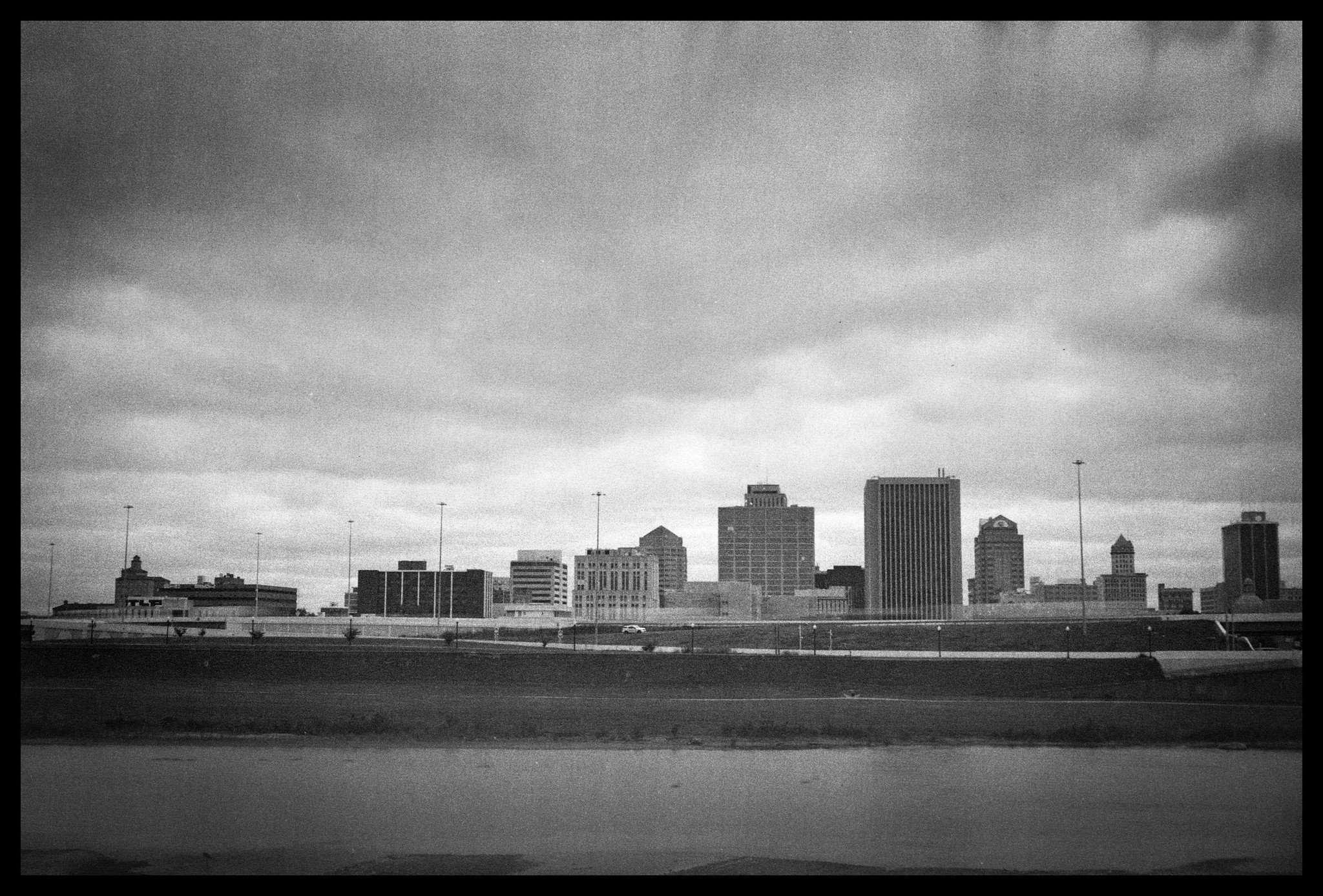Shooting and Developing 50-Year-Old Kodacolor-X Film
One of the Duaflex IV cameras I recently purchased from an online estate sale had a roll of film still in it, that showed it was at exposure #2 on the red window. Knowing that the film was in a 63 year-old camera, the possibility of it being useless and/or ruined was very high. But finding old film and trying to see if I can get anything out of it is always a fun hobby so I thought I’d give it a go.
I took the camera into my light-tight bathroom and turned out the lights. I removed the roll of film from the back in the darkness and re-rolled it back to the beginning. When I turned on the lights I saw that it was a roll of Kodak Kodacolor-X.
Kodacolor-X was a color film rated at ISO 80. It was made between 1963 and 1974, and used a special proprietary “C-22” development process that is no longer available. Any Kodacolor-X film that is found or shot now needs to be developed in B&W chemicals and will produce a grey-scale image on the orange film base.
1969 Kodacolor-X advertisement
Given the production run period of the film, a good guess is that its around 50 years old or so and has probably been in the camera all of that time. The chances of someone opening the back to look inside during that time is very high. But, there’s an off chance that someone shot 2 images, put it in a bag, and forgot about it all of these years with no one opening the camera until it made its way into my hands.
I typically follow the rule of adding 1 additional stop of exposure per decade for old film with questionable storage history. I’m fairly confident that no one had the camera in a freezer for the past 50 years, so there’s a good chance that rule would apply. If the film was originally rated at 80, then 5 stops slower would mean that I’d have to shoot it at ISO 2.5. That’s really slow!
A low ISO rating of 2.5 means that even in bright light I’d need a tripod and a remote shutter release. Unfortunately, none of my 620 cameras have that ability. And, knowing that the film was probably brittle due to age, re-spooling it onto 120 spools was out of the question. BUT, my Voigtlander Bessa 1 can shoot both 120 and 620 due to the way the feeder spool is held in a carrier. And the Bessa has the ability to use a cable release to do long exposures.
So I loaded the film in the Bessa, advanced to shot #3 to ensure I didn’t shoot over what was already on there, and set out to make some images in the downtown Dayton area. It was a gloomy mid-morning with rain approaching so it was a perfect opportunity.
Once set-up with the tripod I took a meter reading and figured out that f/11 with a 1-second shutter time should be about right. I shot the remaining 6 images on the Bessa and then headed home right before the rain hit.
The next day I developed the images in Rodinal B&W developer mixed at a 1:100 ratio with 500ml of water at room temp. This is what is often called the “Semi-Stand” method, where the film sits in the diluted developer and slowly develops, with a shake every 15 minutes to agitate. For old film I typically stretch the time from 1 hour to about 1 hour 30 minutes, and that’s what I did here. After the develop time I did a stop wash, and then fixed the film for about 10 minutes. Its been my experience that that expired color film in B&W chemistry needs a slightly longer fix time and 10 minutes has been just about right for that.
The results?
Well, whatever was shot as the first two images was no longer there. It looks like someone maybe shot over them when they were checking out the camera, or left the shutter open too long. It was just a blown-out mess of blobs. BUT – the six images I shot were on there and I was able to scan them.
The images are below.
The expired film with its moodiness, large amount of grain, and imperfections really works for me in these images. I also like the fact that with the 1 second exposure time, any of the moving cars were just blurs in the image. I was surprised at the cloud detail that the film was able to capture – I expected a blown-out white area where the clouds were.
All-in-all I’d call it a success. Yes, I would have loved to have seen some 50 year old images, but being able to shoot with the old film and get something out of it was fun. I would never recommend that anyone shoot expired film for anything important, like for example your sister’s wedding. But, for a fun project or something where unexpected results could be part of a creative process, its worth experimenting with.
If you have any old film that you want to shoot with and have questions, please feel free to send me a note. I’d be happy to help!
Thanks for reading,
Jeremy






